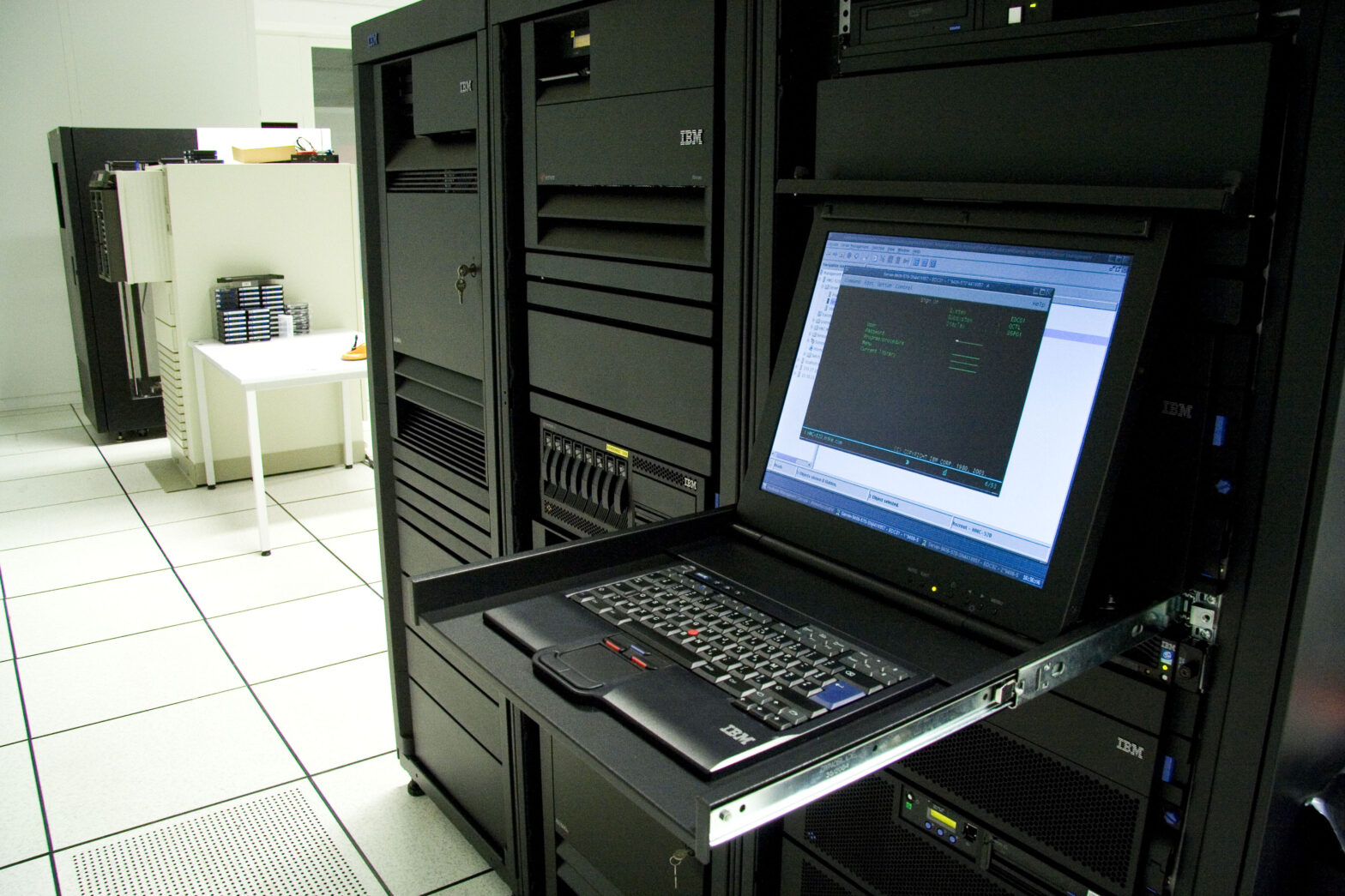Around 90% of Fortune 500’s core systems are mainframes, but with the rise of the cloud, incoming tech talent is lost when it comes to mainframe infrastructures.
So what does this talent shortage mean for the future of mainframe systems? Will it endure?
In a wide ranging interview with Information Age, Ken Harper – an IT director at Ensono, a mainframe and hybrid IT solutions company – discussed the mainframe talent drain and the major industry transformation led by the cloud.
He explained four solutions that employers can adopt to address the mainframe talent shortage, which is essential because, as he goes onto explain, mainframes are too crucial to mission-critical operations. Harper ultimately predicts, therefore, that despite talk of the death of the mainframe it is too important to disregard – even with the rise of the cloud.
Instead, hybrid IT models, which leverage cloud and mainframe, take a bigger role in enterprises.
What is your role?
I’m the director of mainframe services at Ensono, so I provide leadership and direction for Ensono’s mainframe services for current and future clients.
>See also: 7 tricks to get millennials working on the mainframe
What does Ensono do?
Ensono delivers complete hybrid IT solutions and governance, from Mainframe to Cloud, tailored to each client’s journey. Whether our clients are leveraging the cloud or modernising legacy technologies, Ensono is able to help them manage these solutions for resilient operations and optimise systems enabling our clients to do what they do best, focus on their business
What is the current state of your industry?
The industry is currently experiencing a major talent shortage. Baby Boomers who have experience with mainframes are have started to retire en mass – 10,000 Baby Boomers turn 65 everyday (Washington Post) – and Millennials coming into the workforce have no experience with the mainframe platform.
This skills gap is a problem that’s been on the horizon for some time, but the recession in 2008 actually slowed the mainframe talent decline, as older tech workers remained at jobs well after retirement age and were able to contribute to mentoring and training with incoming talent, but this was only a bandaid to a serious problem.
Current market conditions are ripening 401k and pension plans, the Boomers that have hung on have reached milestone birthdays making them eligible retirement benefits.
This talent drain is critical because so many businesses rely on the mainframe to operate. Many enterprises have to compete in rapidly evolving markets, while managing legacy applications and infrastructure at the same time.
These mainframe environments become more diminished because there is no investment in updating the technology or hiring the right talent, and this can be critical for keeping a business up and running.
A recent State of the Mainframe study indicated 64% of mainframe IT installations need to hire mainframer’s over the next five years, yet only half of the respondents felt confident about filling this gap.
Is it in a period of transformation – why?
The industry is in the midst of a major transformation due to the popularity of the cloud and the mainframe talent drain. Many organisations are creating plans to fully transition to the cloud, and this exacerbates the talent problem.
Mainframe skills aren’t included in most computer science curriculum, so new graduates with mainframe-specific skills and training are hard to come by. The younger generation is learning skills to manage cloud-based systems, which seems fine in theory.
>See also: Mainframe programmers can have beards too
But the problem with a workforce of cloud skill-sets is the realisation that a full transition to the cloud isn’t possible for a significant number of businesses. The mainframe is too vital for mission-critical operations for a wide range of industries and enterprises.
So instead, we’re seeing businesses backtrack on plans to transition to the cloud, and move to Hybrid IT models or stay on mainframe. And when this happens, their workforce isn’t equipped for mainframe management.
What does the talent shortage mean for the future of mainframe systems?
The talent shortage means that organisations are going to have to change the way they operate mainframes. Operating these systems in-house isn’t always an option in today’s technology landscape.
Even services companies like Ensono who manage and maintain mainframe workloads for clients struggle to find talent with the right skills and experience, so this is a challenge across the board.
Organisations need to put forth more effort and resources toward mainframe talent. Otherwise they face a costly dilemma as their mainframe environments become operational diminished.
The talent shortage won’t necessarily change the fact that companies rely on and use mainframes – it will mostly disrupt the way organisations operate and manage their mainframe systems, as well as the way organisations hire.
As far as hiring, you can no longer look to candidates with resumes full of mainframe experience because that doesn’t exist Instead, businesses and IT teams need to look toward qualities like trainability and adaptability.
What is your 4-point solution?
There are four ways businesses can address the mainframe talent shortage.
Move off mainframe systems
While this may be a viable solution for some organisations, it’s easier said than done. This is especially difficult when mainframe application support has been outsourced and/or off-shored with limited or no history of how the apps interact.
>See also: The mainframe is hindering application delivery
Develop internal talent
With the evolution of the mainframe over the past 40 years, many entry-level jobs have been eliminated, and this has severely compressed job progression. It’s important to look for individuals with great soft skills and use more advanced mainframe employees to train them in-house.
This strategy is especially challenging for smaller mainframe shops who don’t have the resources, as this method requires more time, energy and money than other options. This takes time, effort and a budget while many companies are cutting back on training budgets.
Source talent externally
The dynamics of talent supply and demand make it more challenging than ever to find experienced and qualified external mainframe talent. And when you find the talent, you’ll have to invest money and time to hire and transition these employees into your organisation.
Staff augmentation, or renting bodies in the short term, is the best solution for some organisations if they are in time and budget for their IT transformational projects.
Outsource mainframe options
You can choose from three mainframe outsourcing options: managed services, sunset services or remote infrastructure management (RIM).
Managed services may be the only solution when there is minimal mainframe support staff and out-of-date software and hardware. This can ‘keep the lights on’ until the data, process and business requirements are no longer needed.
>See also: Enterprise storage in 2017: trends and challenges
Sunset services where we take care of the legacy systems until they gracefully age out. This gives companies getting off a mainframe system time to step back and do it the right way.
RIM can be a quick, tactical solution when business dynamics have accelerated timelines that impact IT — for example, when early retirement packages result in mass IT retirements all at once. RIM is also a good gateway moving off the mainframe permanently as it gives companies time to re-platform in an effective and efficient manner.
How can you get talent to work on the mainframe?
Acquiring mainframe talent means hiring high-potential employees and training them from within to get the skills necessary. It’s not like the old days when you recruit and find someone with these skills right off the bat.
As a matter of fact, 98% of the college recruits know nothing of the mainframe(IBM). We know we’re not going to find people who have three or five years of experience, so at Ensono, we’re looking for individuals who understand the market and have great soft skills.
Think about how an artist can work in different mediums, such as watercolour, oils, etc. If you have skills in Java, HTML, scripting languages, Microsoft, or anything similar, then you can apply those same concepts and talents to the “mainframe medium.”
>See also: The evolution of virtualisation
CIOs, tech hiring managers and other IT leaders have to understand how this field has evolved in order to properly adjust. This kind of talent is essential for businesses’ ability to compete, so they need to be able to up the ante and invest in the correct resources. Non-technical skills are just as important, if not more, than mainframe technical skill sets.
What does the rising popularity of the cloud mean for the mainframe? It’s death, or transformation?
Critics have predicted the death of the mainframe for more than 30 years, yet in spite of constant speculation and lofty assumptions, mainframe technology has proven its indispensability.
The majority of global Fortune 500 companies still rely on mainframes to power everything from ATM transactions to airline reservations. The same mainframe programs that put the first astronaut in orbit (see the movie Hidden Figures) are still used and supported today.
The rise of the cloud doesn’t mean the end of mainframe systems. Mainframes are too crucial to mission-critical operations. Instead, we’ll start to see Hybrid IT models, which leverage cloud and mainframe, take a bigger role in enterprises.







